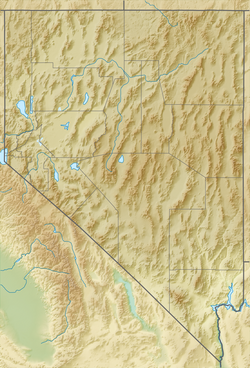| Laketown Dolomite | |
|---|---|
| Stratigraphic range: Silurian | |
| Type | Geologic formation |
| Sub-units | Gettel Lake, High Lake, Jack Valley, Portage Canyon & Tony Grove Lake Members |
| Lithology | |
| Primary | Dolomite |
| Location | |
| Coordinates | 39°18′N114°54′W / 39.3°N 114.9°W |
| Approximate paleocoordinates | 7°42′S71°42′W / 7.7°S 71.7°W |
| Region | Nevada, Utah |
| Country | United States |
The Laketown Dolomite is a dolomite geologic formation in Nevada and Utah. It preserves fossils [ citation needed ] dating back to the Silurian period. [1]

